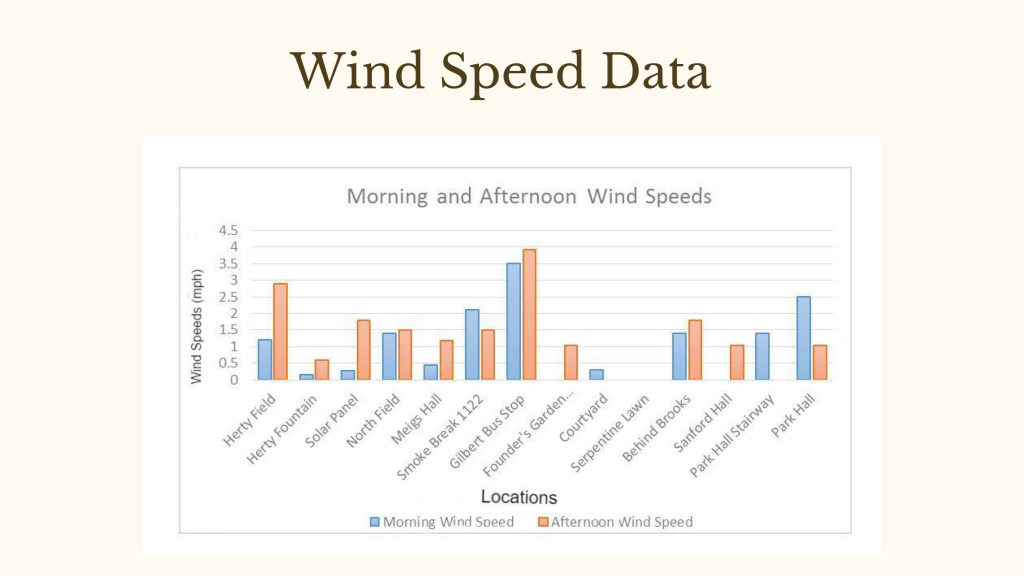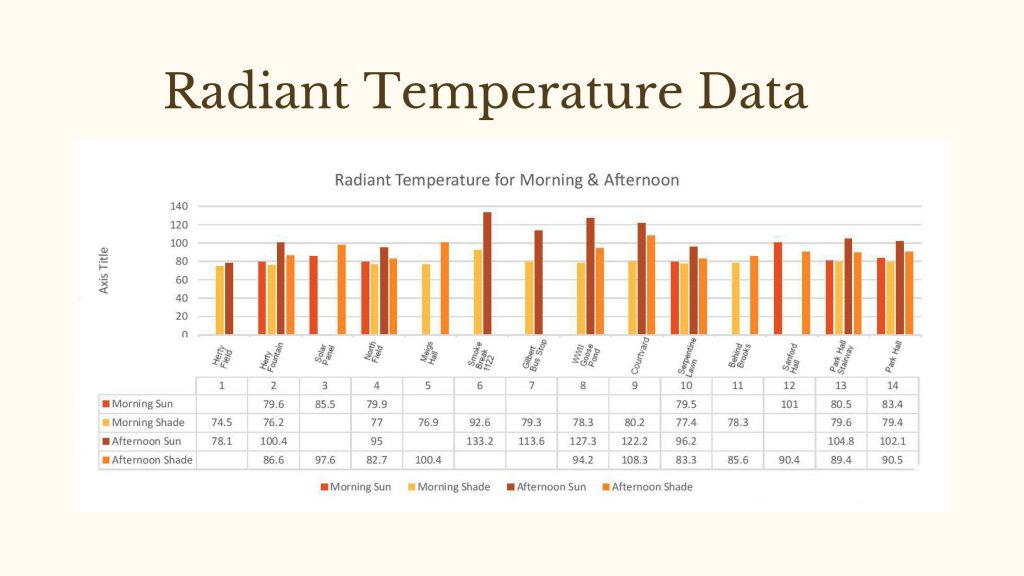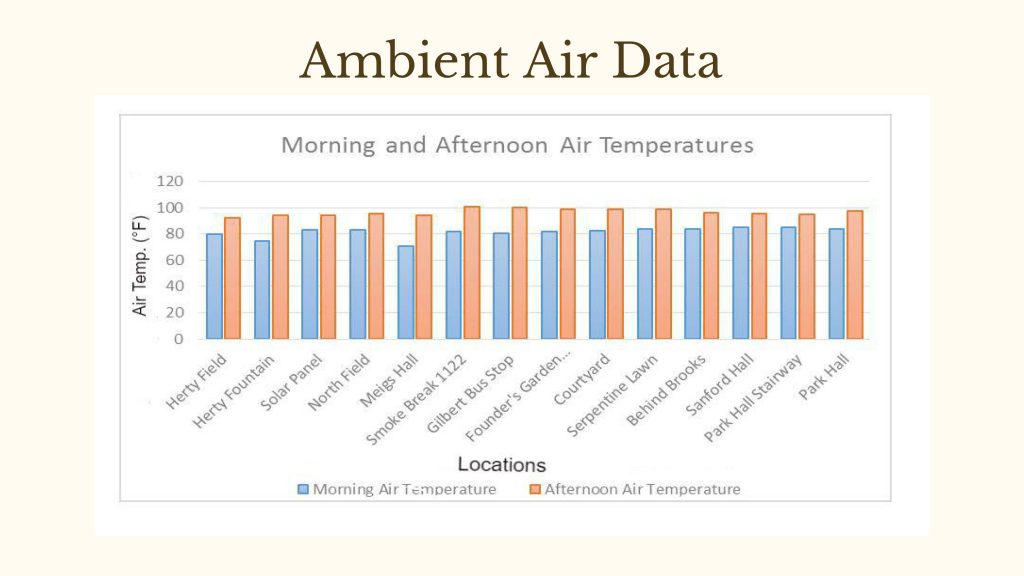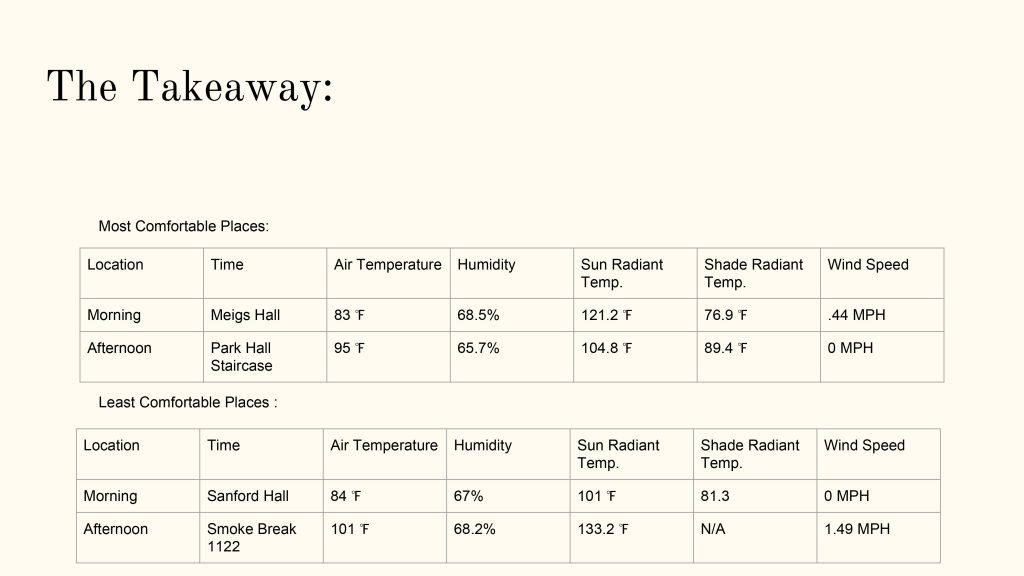Below are graphs showing data from the various sites within our surveyed area. Overall, each site’s individual comfort level was defined by trees, architecture, and orientation to the sun, with the latter being the most important. Trees, although able to provide shade, also provide wind break, which can take away from the comfort of a site. In a way, the conclusion shows how design should start the ground up, taking into account building orientation and the definition of space through architecture, before attempting to mediate an issue through placement of trees or other amenities.




